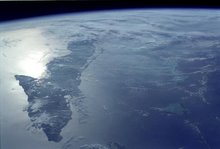With the hurricanes gone, the country officially in recovery phase, and huge challenges looming to restore half a million damaged homes and a flattened agriculture sector, one might think the Cuban government would reach into the economic policy toolkit for solutions.
Not so, at least not so far.
Until yesterday, the only hint of something new was a vague one, when Fidel Castro wrote on September 7 that “
In the same essay, he noted that
“Steady as she goes” seems to be the guiding concept in economic policy.
In the one area where major change seems to be under way, the farm sector,
Three of four applicants have no land now, the report says, representing an influx of new producers – a positive sign in a sector where it’s generally believed that it’s hard to find people who want to work.
Raul Castro made an appearance in Pinar del Rio last week and reiterated his concern about salaries, purchasing power, and work incentives: “People have to feel the need to work,” he said. He reiterated that
In the same appearance, he addressed the dual currency/dual salary system that is at the heart of the work incentive problem – but he said it “might be audacious” to think that
What to do to revive food production? There are numerous reports that Cuban farmers are doing what they know how to do after hurricanes, which is to plant short-cycle crops as fast as they can (see AP story here or video linked here).
But price increases are a problem. According to this report, prices in the agros, the farmers markets where producers sell their surplus at market-driven prices, have doubled since the hurricanes.
The government’s response is to institute price controls. Yesterday’s Granma carried a front-page announcement under the headline “Information for our people” that warned against theft and speculation, stated that previously planned food imports are “guaranteed” and new imports to replace lost domestic production are being contracted, stated that the government will not raise prices on food that it sells and that prices in the agros will be capped. (AP story here.)
Over the years, Cuban data have shown that about two thirds of their products come from private farmers, the most productive in
One can understand that any government would protect against price gouging, but that’s not what is happening here. “Provisionally,” the announcement says, for a “group of basic products,” vendors may charge no more than the prices that were prevailing in the markets before the hurricanes struck.
So prices will be frozen for the producers who are being called upon to increase production, who face higher production and transportation cost due to the government’s recent fuel price hike, and who surely face additional costs related to the hurricanes, such as repairing their homes, or hiring extra labor to clear fields and get new crops in the ground.
This is not a signal that will increase production.
Indeed, today’s El Pais reports that an “employee” of a
Meanwhile, Venezuelan President Hugo Chavez has visited
Maybe his help will be enough.
Update: There are several reports about the markets, both state and private, with less supply and less variety of products in recent days: EFE and Juventud Rebelde (Spanish), and EFE and IPS (English). The immediate cause of the reduced supply seems to be, obviously enough, that the hurricanes ravaged so many crops in the fields. But price controls are pinching, too. The EFE article cites a market vendor who is not selling onions because his supplier’s price to him, and the maximum price he can charge at retail, are exactly the same. In other words, no margin.
Update: La Jornada’s article today is more concrete than those cited above. The products subject to price controls are: three types of plantains, three types of beans, garlic (three sizes), malanga, boniato, yuca, onions, tomatoes, cabbage, and rice.




















